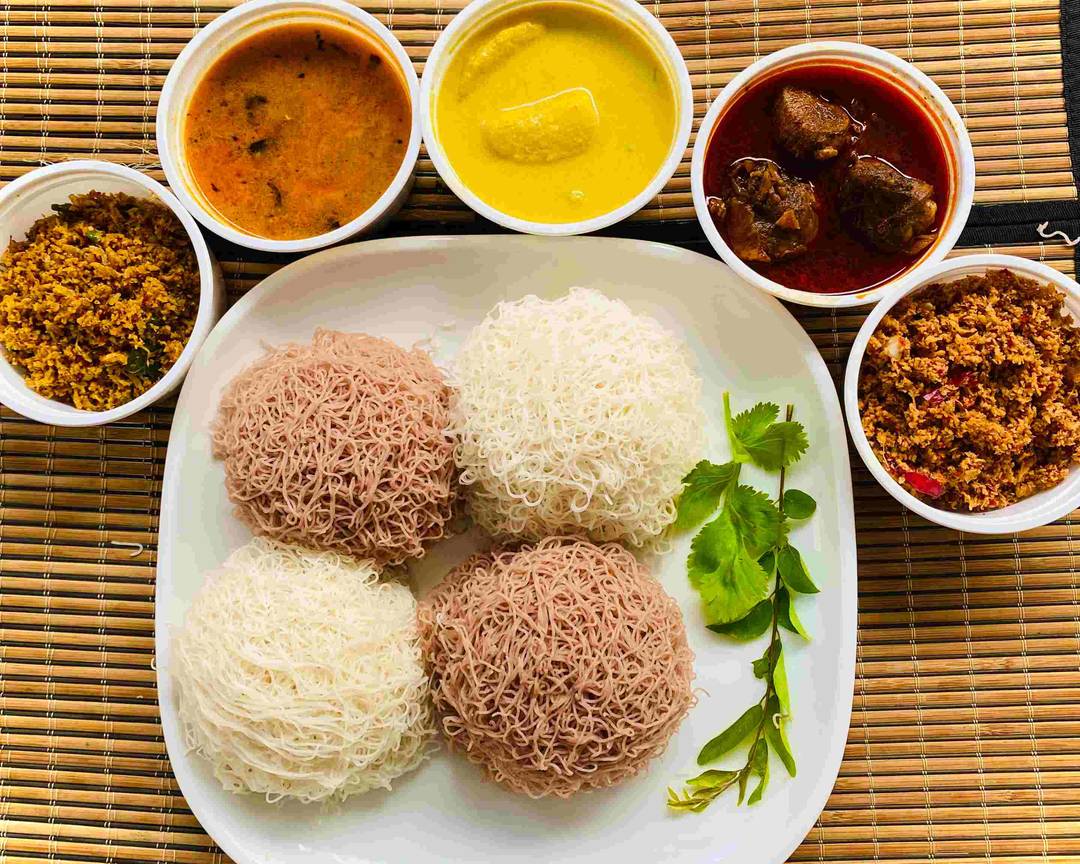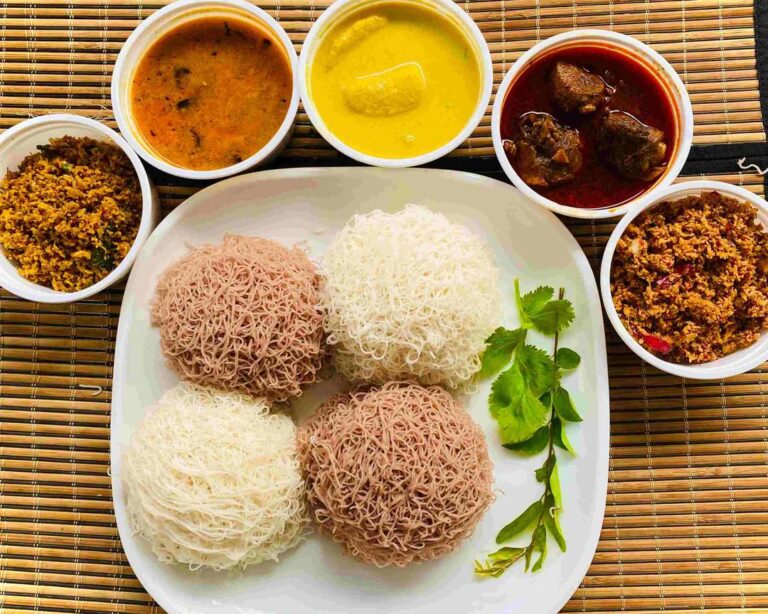Sri Lankan String Hoppers: A Comforting Breakfast Classic
When it comes to Sri Lankan breakfasts, string hoppers (locally known as idiyappam) are in a league of their own. These delicate nests of steamed rice noodles are soft, slightly chewy, and perfectly designed to soak up the rich flavors of curries, sambols, and coconut milk gravies.
Served warm with coconut sambol, dhal curry, or kiri hodi (a coconut milk gravy), string hoppers create a meal that’s light yet deeply satisfying. They’re as common on the breakfast table as toast or pancakes in Western households — and for good reason.

What Are String Hoppers?
String hoppers are made by pressing rice flour dough through a special press to create thin, lace-like noodles. These are then steamed until cooked. They are naturally gluten-free and, unlike fried or baked breads, feel lighter and healthier. The slightly tangy flavor comes from a brief resting of the dough and the subtle nuttiness of the rice flour.
A Staple in Sri Lankan Culture
In Sri Lanka, string hoppers are a staple not just for breakfast but also for dinner. They are typically served in generous stacks, with family and friends gathered around a table filled with sambols, curries, and fresh coconut chutney.
It’s not just food — it’s a cultural ritual that celebrates sharing, warmth, and the joy of eating together.
Our First Encounter with String Hoppers
We first tried string hoppers at a small family-run café in the hill country of Kandy, served alongside a creamy dhal curry and fiery lunu miris. The combination of soft noodles with the punch of sambol and the comfort of curry was unforgettable. It’s a dish that balances spice, texture, and subtle flavors in every bite.
Why You’ll Love Making Them
While they look intricate, string hoppers are surprisingly easy to make at home with the right tools. You only need rice flour, hot water, and a pinch of salt to form the dough. With a string hopper press (or idiyappam maker), you can press the noodles directly onto steamer trays or banana leaves, and they’re ready in just a few minutes of steaming.
Share this recipe
What to Serve with String Hoppers
- Coconut Sambol – A tangy and spicy condiment made with fresh grated coconut, chili, and lime.
- Dhal Curry – A creamy and lightly spiced lentil curry that perfectly complements the mild noodles.
- Kiri Hodi – A golden coconut milk gravy, aromatic with curry leaves and turmeric.
- Pol Sambol – A dry-style sambol that’s a bit more intense in flavor.
String Hoppers

NUTRITION
Ingredients
- 250 g rice flour (red or white)
- 1/2 tsp salt
- 250-300 ml bolied water
- Coconut oil or neutral oil for greasing
Instructions
- In a large bowl, mix the rice flour and salt.
- Gradually pour in the hot water while stirring with a wooden spoon or spatula until a dough forms.
- Let it cool slightly, then knead by hand for 2–3 minutes until soft, smooth, and pliable.
- Grease a string hopper press (idiyappam maker) with a little oil. Fill it with the dough.
- Press the dough onto lightly oiled idli trays or banana leaves in thin, circular lace-like patterns.
- Steam the string hoppers in a steamer or large pot with a steaming rack for 6–8 minutes, or until they are cooked and slightly firm to the touch.
- Remove from heat and let cool slightly before serving.

